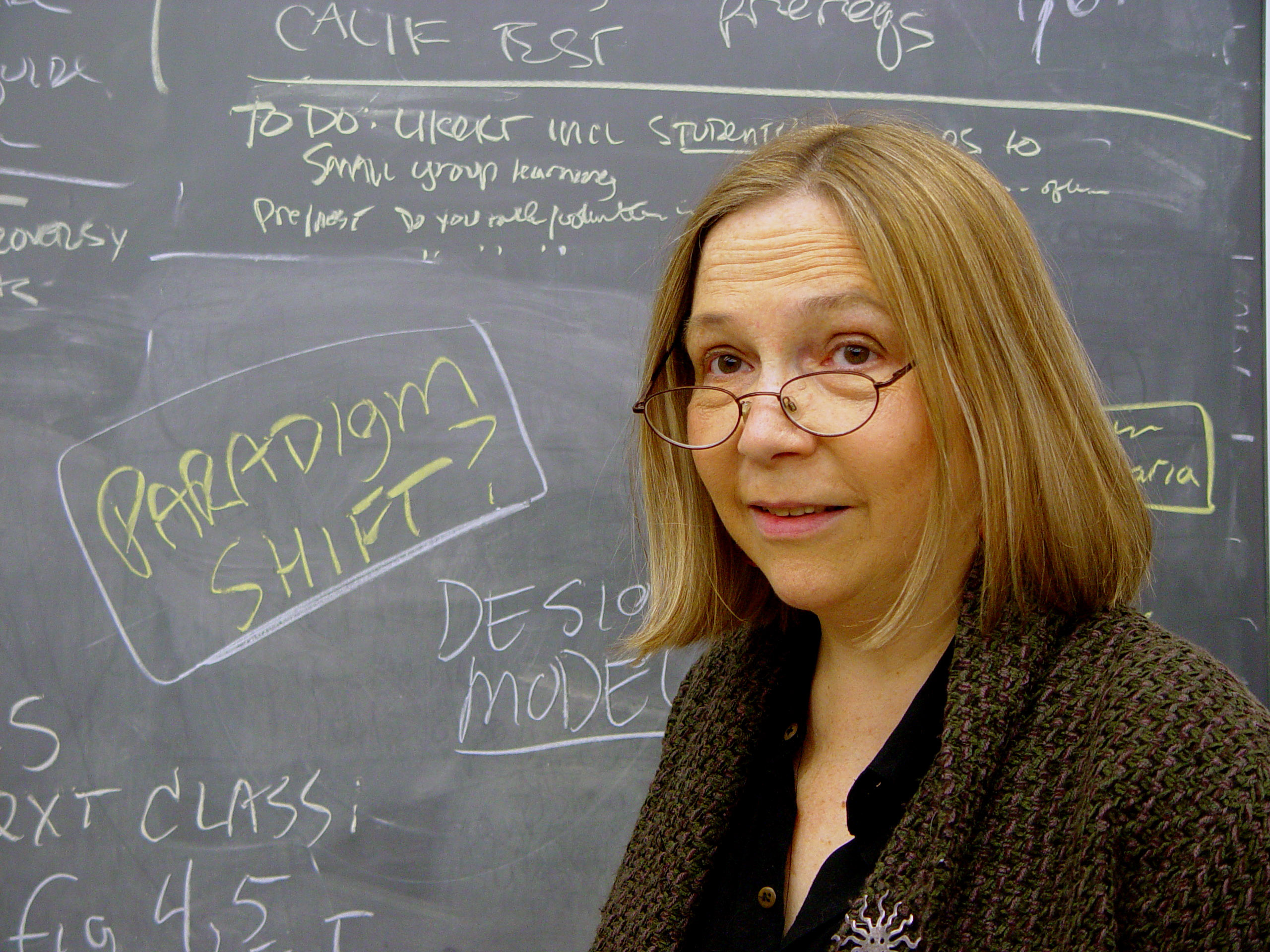For the second consecutive year and the third time since 2001, graduating seniors in the CCNY Division of Science CCAPP (City College Academy of Professional Preparation) program have selected Dr. Sally Hoskins, Professor of Biology, to receive the CCAPP “Teacher of the Year” Award. No other faculty member has won as often, according to Dr. Millicent Roth, the program director.
Professor Hoskins attributes her popularity with students to the appeal of her Biology 355 class, “Analysis of Scientific Literature with C.R.E.A.T.E,” an upper-level elective for biology and other science majors. “Students who have taken the class have told me that it has helped them do better in other classes they take later on,” she says. “They learn to read critically and focus on understanding every figure and table. One student said he even used the techniques to prepare for the MCAT (Medical School Admission Test).”
BIO 355 employs a teaching method developed by Professor Hoskins and Dr. Leslie M. Stevens, a University of Texas geneticist, with National Science Foundation support, called C.R.E.A.T.E. that teaches students how to critically read scientific papers. C.R.E.A.T.E. is an acronym for the program’s steps: Consider, Read, Elucidate hypotheses, Analyze and interpret the data and Think of the next Experiment.
Unlike most science classes, which focus on mastery of content, BIO 355 emphasizes learning techniques and experimental logic used by scientists to conduct research and evaluate results. The goal is for students to master “the universal language of data analysis,” Professor Hoskins says.
One of the class requirements is for students to design experiments based on their analysis and evaluation of assigned scientific articles. They also come up with questions for the papers’ authors that are answered through an e-mail survey. This helps students understand “the people behind the papers.
“In-depth reading of scientific literature allows students to think about research in a different way,” Professor Hoskins explains. “It leads them to get into higher levels of scientific thinking like synthesis, analysis and evaluation; not just memorization.”
One of her goals is to get students to raise their own expectations. “If you can learn to produce consistent, solid, “think like a scientist” analyses, you can get an “A” in this class,” she says. The class is also a confidence booster for many students since they realize they can be articulate about science and come up with – and defend – new ideas, she adds.
Professor Hoskins’ method of teaching is giving students a new way approaching scientific literature “that works for them,” notes Dr. Roth. “She’s really trying to be innovative in science education and students recognize that.”
Related Story
NEW TEACHING METHOD DEVELOPED AT CCNY IMPROVES UNDERGRADUATE STUDENTS’ SKILLS, ATTITUDES TOWARD SCIENCE
MEDIA CONTACT
Ellis Simon
p: 212.650.6460
e:
esimon@ccny.cuny.edu